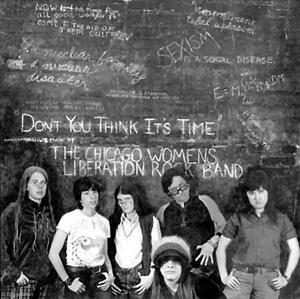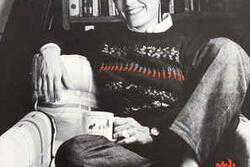The Path to Melodic Liberation
Music has always been a liberating medium for me. I feel like I can express emotion in its rawest form by playing guitar. However, music does not singularly liberate the person who is creating it; its open-ended nature allows for it to be interpreted by the masses and for listeners to create their own intimate relationships with each song and to draw unique meaning from that.
For this reason, I’m drawn to Naomi Weisstein’s story. I fondly read about her founding of the Chicago Women's Liberation Rock Band (CWLRB). It’s not uncommon to use music as a medium for activism, but in 1970, when Naomi founded the band, women playing rock and roll music was unusual. Rock and roll is an outlet for anger, passion, frustration and tension, which makes it easy to understand the appeal of it for so many people in the late 20th century; there was so much political and cultural uncertainty in the United States and in the world more broadly. Why shouldn’t women be included in that melodic liberation?
I love the narrative that the CWLRB offers: a group of women break the status quo and step into a traditionally male-dominated genre, guitar in hand, there to break down the barriers of injustice. Yet, this is not the part of the story that stood out to me the most; I found myself focused not on the Chicago Women’s Liberation Rock Band’s rise, but on its downfall.
Like many famed bands of the 1960s and 1970s, CWLRB faced disagreements between band members. However, these arguments were not about musical authenticity, drugs, or unfaithfulness, as made cliché by bands like Fleetwood Mac and the Beatles; rather, the bandmates couldn’t agree on what form of feminism the band should represent. Should they be pushing for the rights of lesbians? Would having a hierarchy of leadership within the band make them “impure” feminists, complying with the structures of men?
The issues that the band members faced were common internal struggles for feminists of their era. In this modern age, in which progressive movements so strongly emphasize inclusivity and intersectionality, it’s hard for me to imagine such questions being polarizing enough to split up a band that had been together for three years. Yet, they were. Naomi Weisstein, garnering most of the blame as the founder and leader of CWLRB, left the band (and even the city of Chicago). Shortly after her departure, CWLRB disintegrated.
From Naomi Weisstein’s story, beyond learning about the power of women in music, I learned to be wary of trying to put myself in a box and label my “brand” of feminism. Humans don’t have to endorse a certain philosophy in order to have strong ideals. To me, feminism is all about having the freedom to be whatever you want to be and do whatever you can dream up. I hope to be able to look past the pressures to polarize myself in my feminism. I think that this is where real change can made.
This piece was written as part of JWA’s Rising Voices Fellowship.






